Introduction
Critical success factors (CSFs) play a vital role in driving organizational success. In this article, we will explore the definition and importance of CSFs, the different types of CSFs, how to identify them, and how to measure them using key performance indicators (KPIs). We will also delve into the steps involved in creating a strategic plan and implementing CSFs within an organization.
Additionally, we will discuss the commitment and adaptation required to achieve CSFs, along with practical examples of CSFs in various industries. By understanding and leveraging these CSFs, organizations can pave the way for enduring success in any industry.
Definition and Importance of Critical Success Factors
Critical success factors (CSFs) are not just about identifying the vital aspects of performance—they are about understanding the unique elements that drive organizational success. For instance, in the healthcare sector, leaders acknowledge that besides individual traits like grit and confidence, business factors such as strategic alliances and successful exits, whether through acquisition or IPOs, are key to prosperity. Similarly, Toyota's Woven Planet venture highlights the importance of execution alongside sound investment; a visionary strategy must be matched with the ability to deliver concrete features within set timelines.
This is crucial in a landscape where diverse leadership is strongly correlated with financial returns and holistic growth. Moreover, the high failure rate of e-procurement initiatives underscores that technology is not a panacea; rather, effective stakeholder communication and collaboration are indispensable. Understanding and leveraging these CSFs, in alignment with a firm's specific objectives and strategic planning, is the cornerstone of enduring success in any industry.
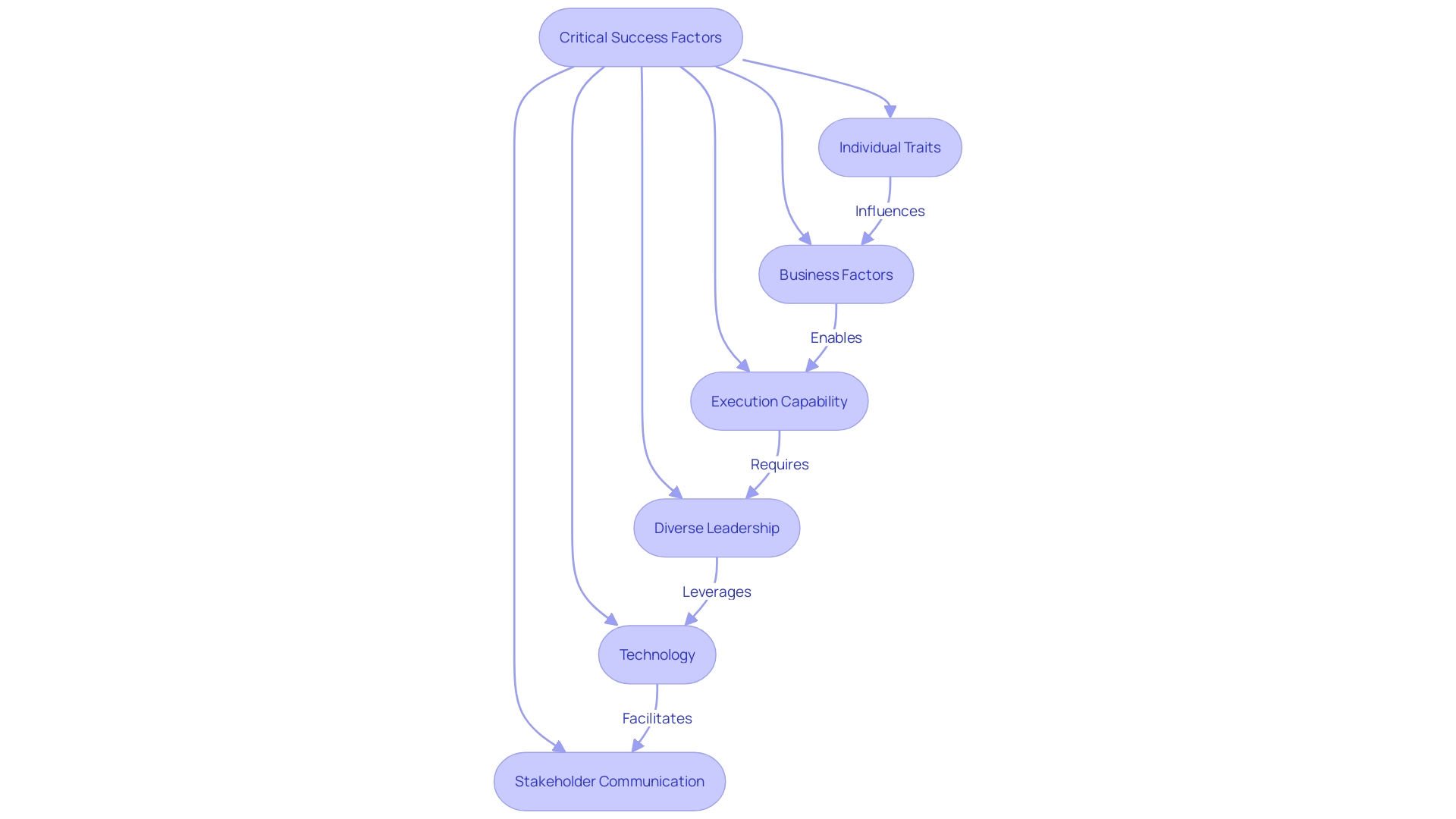
Types of Critical Success Factors
Identifying Critical Success Factors (CSFs) is paramount for organizations aiming to achieve Predictable Success. Focusing on a few pivotal areas can steer an organization towards triumph, while overlooking them can lead to failure. Let's delve into the types of CSFs vital for organizational growth:
-
Environmental Factors: External elements including economic trends, market dynamics, and the regulatory landscape shape the business environment. For instance, the increasing concern over climate change impacts has led almost 90% of executives to anticipate significant business effects within the next five years, necessitating a proactive approach to environmental CSFs.
-
Industry-Related Factors: Internal industry elements such as competitive positioning, market share, and technological innovation are pivotal. With rapid advancements in AI and other technologies, for example, traditional businesses are now compelled to revisit and potentially reinvent their strategies to stay relevant.
-
Peer-Related Factors: An organization's performance is often gauged against its competitors. The strategies, successes, and failures of peer companies can serve as a benchmark or a cautionary tale, exemplified by Microsoft's need for a change agent to challenge long-standing practices.
-
Temporal Factors: Timing is crucial in business, and staying ahead of trends is a must. A poignant example is a large organization struggling with the Innovator's Dilemma, as emerging technologies deployed by new competitors threaten to obsolete its legacy systems.
Each of these CSFs requires a 'Ruthlessly Constructive' approach, where issues are addressed with a forward-looking and positive mindset. Encouraging this within your team, as highlighted by the concept of being 'Ruthlessly Constructive', involves welcoming a diversity of ideas and fostering an environment where creativity and criticism coexist to drive progress.
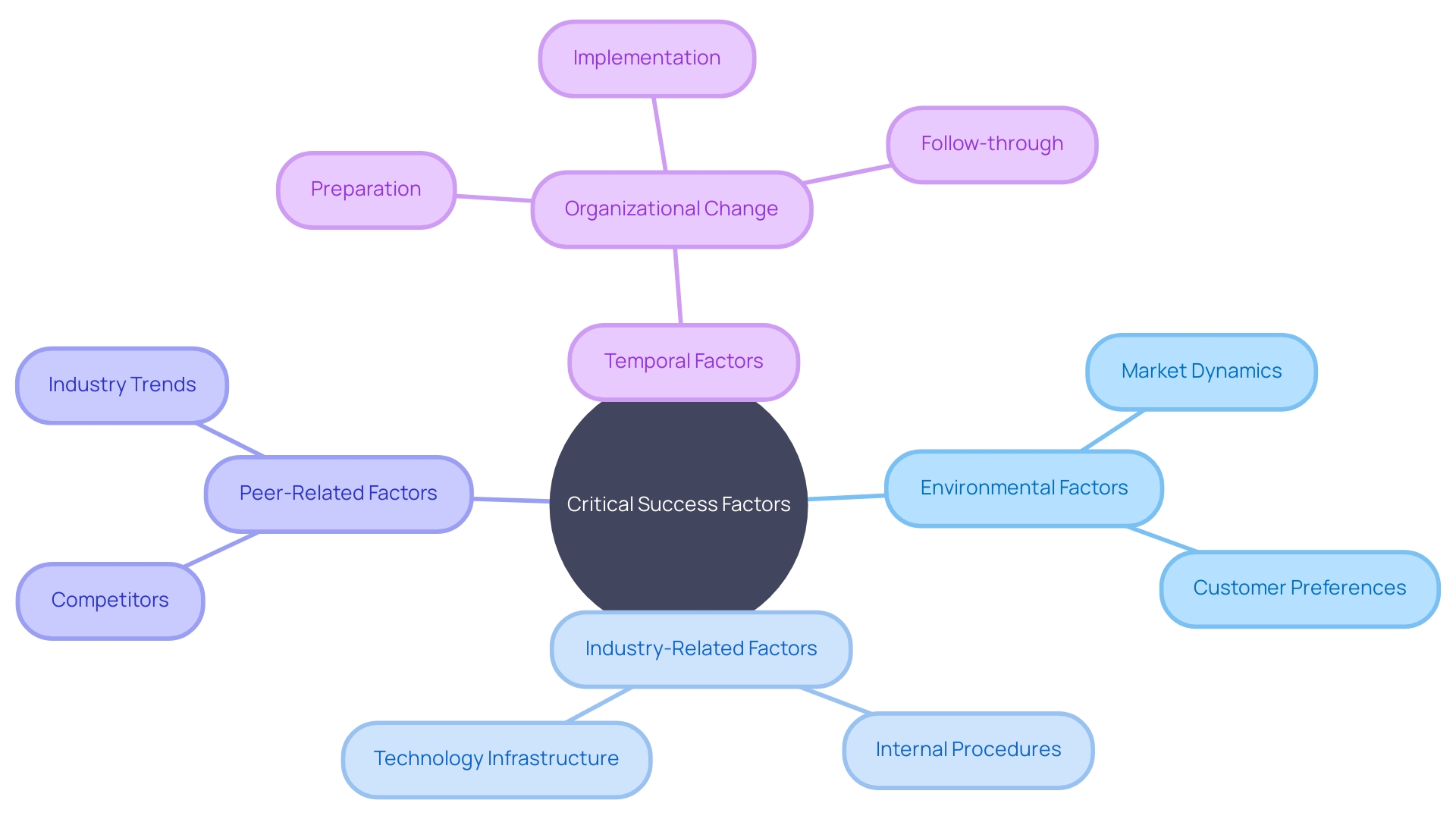
How to Identify Critical Success Factors
To identify Critical Success Factors (CSFs), a systematic approach is imperative, starting with a comprehensive analysis that encompasses both the internal and external environment of the organization. This involves collating and scrutinizing data to understand the landscape within which the organization operates.
Next, pinpoint the key areas that are vital for the organization's triumph. These areas are the levers that, when managed effectively, can significantly influence the organization's performance and outcomes.
Once these areas are identified, it's crucial to define the performance indicators that will serve as benchmarks for measuring success in each critical area. These metrics should provide clear insights into the organization's operational effectiveness and strategic progress.
Finally, engaging with key stakeholders is essential to ensure the relevancy and accuracy of the identified CSFs. Stakeholders such as management, employees, and customers can offer valuable perspectives that help in validating and refining the CSFs.
Case Study: Consider the story of John Udell at Microsoft as a cautionary tale. Despite the best intentions, the failure to navigate the company's needs effectively led to a lack of tangible progress. This exemplifies the necessity of having change agents who can foster 'Ruthlessly Constructive' criticism, pushing for solutions that align with the organization's best interest.
Statistics reinforce the importance of privacy and user preferences, as seen in the Privacy Preference Center, implying that successful CSFs must account for customer-centric values. The W.K. Kellogg Foundation emphasizes the role of private companies in fostering equity, indicating that CSFs must also consider the broader impact on communities and stakeholder inclusivity.
Quotes from industry experts highlight the dangers of ambitious projects that lack concrete scheduling, as evidenced by Toyota's Woven Planet initiative. This underscores the need for CSFs to be grounded in realistic timelines and deliverables.
News: With the resurgence of the COO role, as reported by AOL, there's a growing emphasis on understanding operations to drive efficiency. This trend suggests that operational insight is a CSF for financial leaders seeking growth.
Steps to Create a Strategic Plan and Identify CSFs
To chart a strategic plan and pinpoint Critical Success Factors (CSFs), a structured approach is essential. Begin by crystallizing the organization's mission and vision, setting the stage for long-term aspirations. Next, delve into a SWOT analysis to meticulously evaluate the organization's strengths, weaknesses, opportunities, and threats, which acts as a springboard for strategic direction.
The next step involves formulating strategic objectives that are not only aligned with the mission and vision but are also Specific, Measurable, Achievable, Relevant, and Time-bound (SMART).
Following this, identifying CSFs is imperative. These are the vital areas crucial for achieving strategic objectives. Reflecting on insights from successful product strategy development, it's understood that an intense focus on customer needs, through empathetic listening and customer discovery, is key.
Tapping into diverse UX research methodologies—be it qualitative or quantitative, attitudinal or behavioral—can provide a deeper understanding of customer voices. As seen in the case of Fitbit, where engaging with millions of users led to a highly successful Sleep category, leveraging customer insights can lead to breakthrough strategies.
Moreover, data is invaluable in informing product strategy and gaining buy-in, particularly from those wielding more influence within the organization. The narrative of strategy development further emphasizes the importance of well-defined objectives, visionary strategy choices, continuous development, and meticulous planning. These elements are critical in positioning the organization to achieve its market ambitions.
By considering market trends and the competitive landscape, as illustrated by the innovative Singapore-Asia Taxonomy's transition category, organizations can ensure that their strategies remain relevant and on course towards a sustainable future. Transition activities are defined as those not currently meeting green thresholds but are on a trajectory towards net-zero outcomes, highlighting the dynamic nature of strategic planning in response to evolving market conditions.
Lastly, the process of strategy development must incorporate a robust change management approach, recognizing that people are central to the success of any transformation. A two-phased change management plan, covering the transformation from inception to completion, is crucial to address potential challenges such as resistance to change or skill gaps. By integrating these elements into the strategic planning process, organizations can create a clear path from a nascent marketing strategy to one that is actively driving results, ensuring the achievement of strategic objectives.
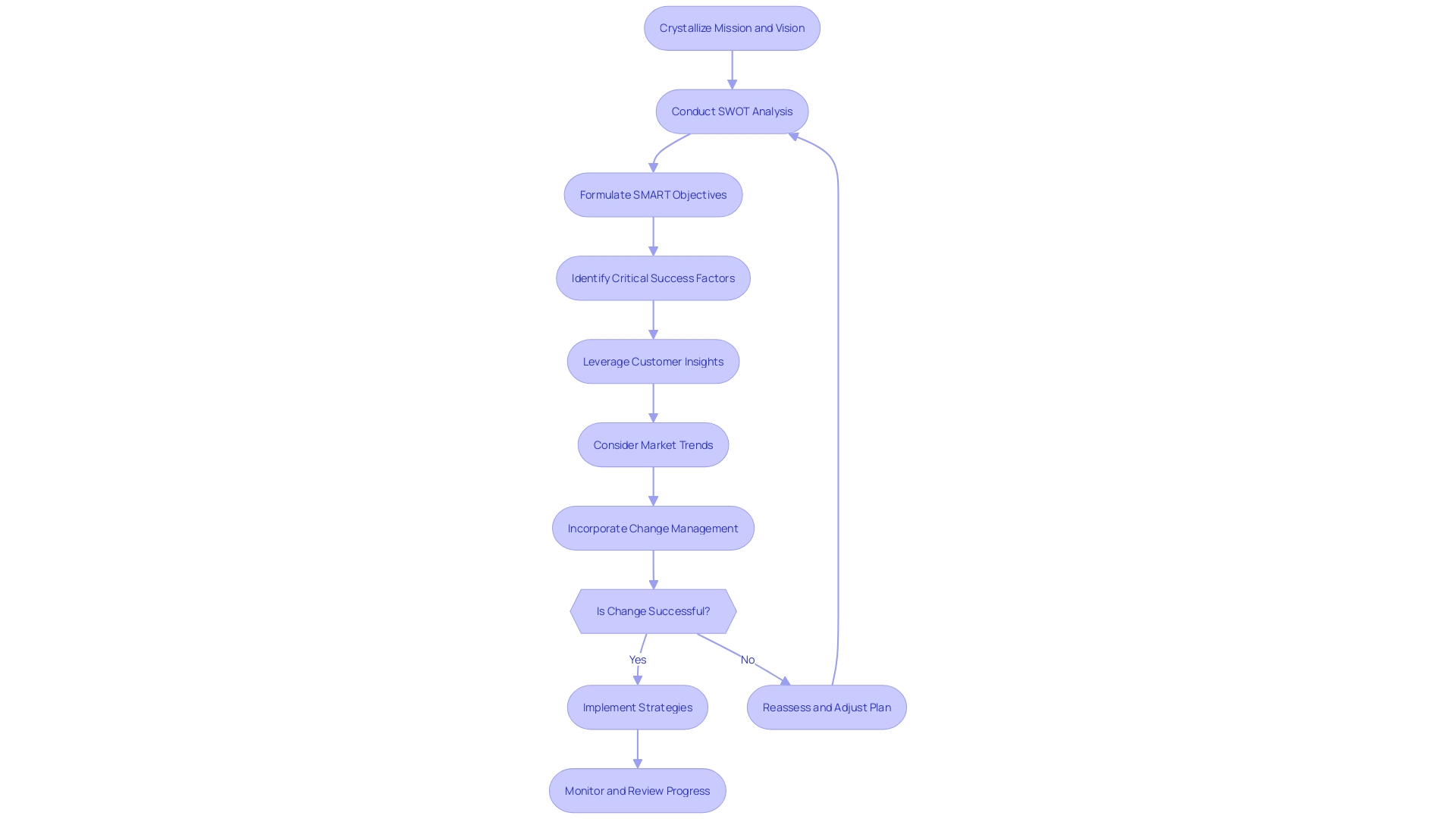
Measuring Critical Success Factors with Key Performance Indicators (KPIs)
To effectively gauge the success of identified Critical Success Factors (CSFs), organizations must employ Key Performance Indicators (KPIs) that are not only quantifiable but also closely aligned with their strategic objectives. KPIs serve as vital signposts on the journey toward achieving organizational goals, providing clear metrics for tracking progress and organizational performance.
For instance, revenue growth rate is a KPI that offers a direct reflection of a company's financial health and expansion over time. Similarly, customer satisfaction scores provide invaluable insights into the perceived value of a company's products or services, while employee productivity metrics reveal the efficiency and effectiveness of the workforce. Market share is another critical KPI, highlighting a company's competitive standing within the industry.
Lastly, the Return on Investment (ROI) is a universally recognized KPI, offering a measure of the profitability and fiscal impact of investments made.
These KPIs, when chosen with precision and monitored consistently, become powerful tools in the hands of decision-makers. They are not just numbers; they narrate the story of an organization's journey, signaling both triumphs and areas in need of attention. For instance, the case of Somerset Academies of Texas, under the leadership of Austin Morgenroth, underscores the importance of integrating streamlined KPIs across various departments for enhanced operational cohesiveness and efficiency.
Similarly, the City of Thunder Bay's experience with asset management planning demonstrates how KPIs can communicate the effectiveness of strategic initiatives to staff and the public, fostering a culture of informed decision-making and proactive risk management. Moreover, Cardinal Health's strategic approach to regulatory starting material strategy for investigational drug applications illustrates how comprehensive and timely KPI tracking can lead to successful outcomes.
In the realm of software development, the importance of KPIs is no less critical. They provide a scoreboard reflecting the performance of software projects, guiding teams toward success by measuring customer satisfaction through indicators like Customer Lifetime Value (CLV).
In summary, selecting the appropriate KPIs for each CSF is a critical step that requires thoughtful consideration. By regularly monitoring and analyzing these KPIs, organizations can make informed decisions, take necessary actions, and steer their course towards sustained success.
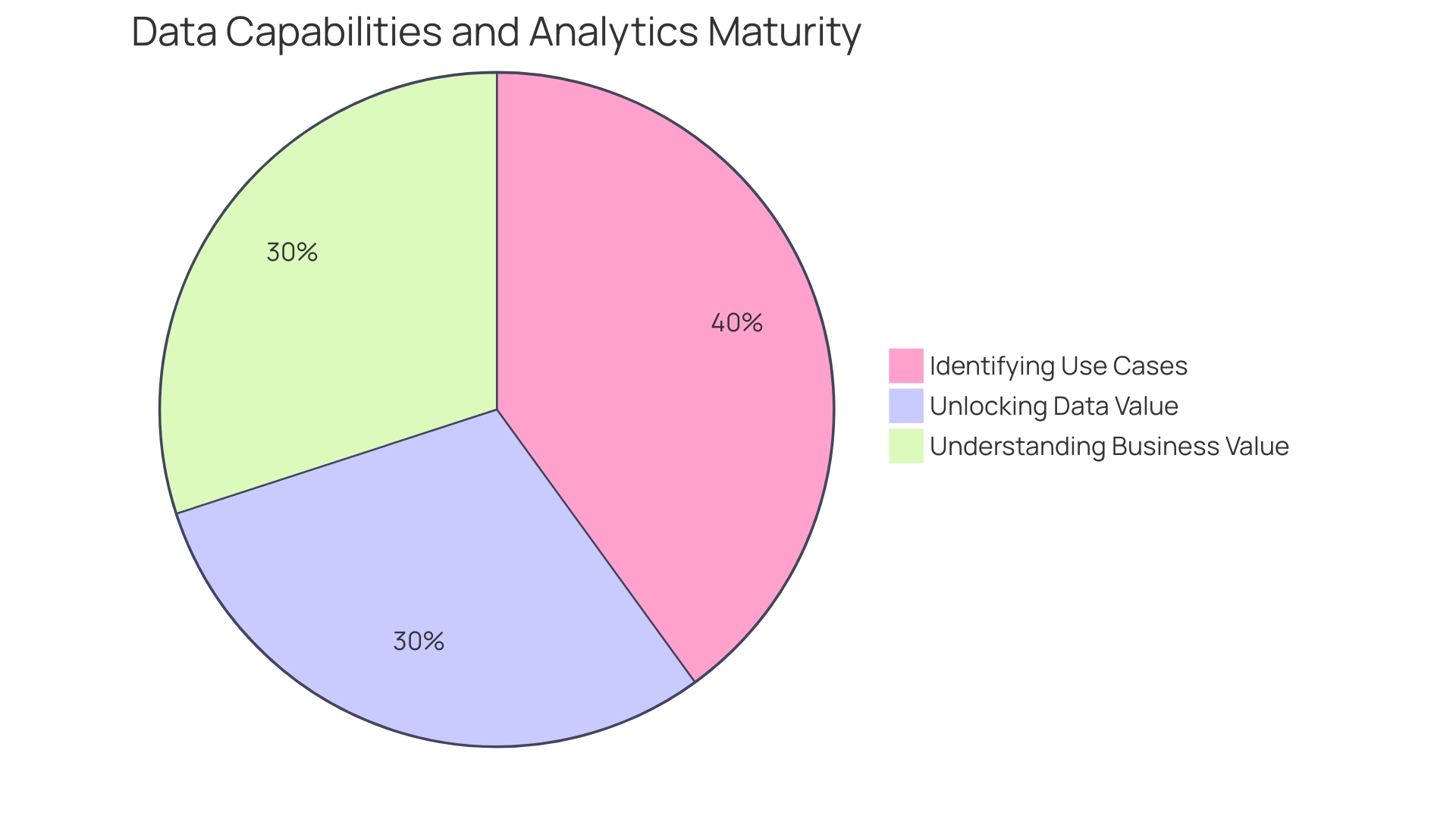
Implementing and Monitoring CSFs
To weave critical success factors (CSFs) into the fabric of an organization's day-to-day activities, a structured approach is paramount. Begin by ensuring that CSFs are clearly communicated and aligned with the goals of individuals and teams across the organization. For instance, Salesforce exemplifies this by monitoring supplier commitments to science-based targets and reporting progress in its Stakeholder Impact Report, emphasizing transparency and shared responsibility.
Assigning specific responsibilities for each CSF promotes accountability. Cisco's SASE Advisory Service demonstrates this by collaborating closely with clients, like financial institutions, to tailor solutions to their needs and conducting comprehensive assessments to pinpoint areas for optimization.
Setting clear performance targets for each CSF is also critical. These targets, akin to the success criteria outlined in the operational excellence checklist, should be comprehensive, minimal, written, and falsifiable, allowing for concrete measurement and progress tracking.
Lastly, regular reviews are essential to evaluate performance and make necessary adjustments. The Security Insights Specification release serves as a reminder of the need for such continuous evaluation to address security complexities effectively. By following these steps, organizations can ensure that CSFs are not only implemented but also ingrained in their operational ethos.
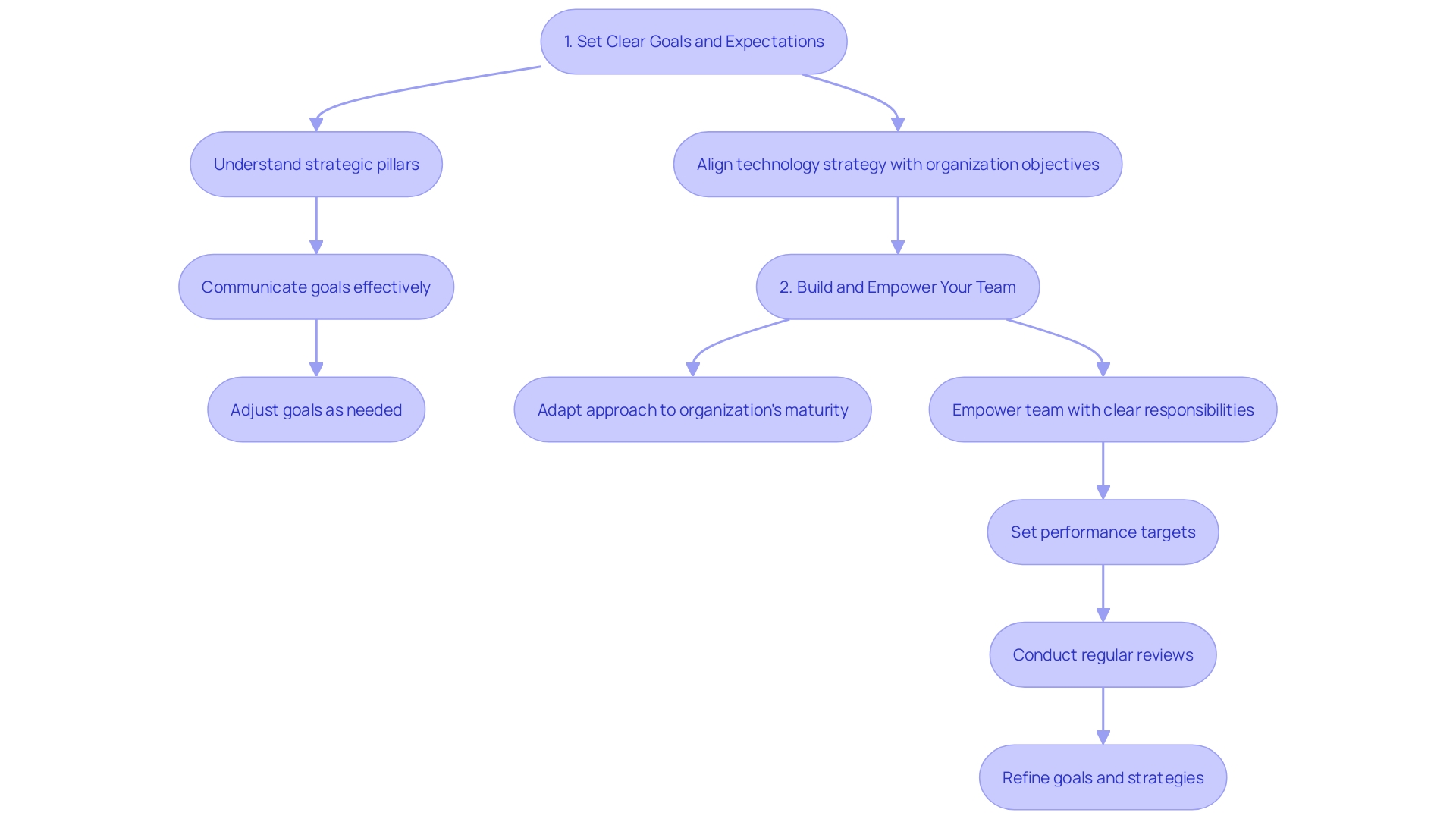
Commitment and Adaptation in Achieving CSFs
To reach the pinnacle of success in the realm of business, it is essential to firmly establish and pursue Critical Success Factors (CSFs). Here's a strategic approach:
-
Leadership Commitment: It's imperative for leaders to not only identify CSFs but to also champion them. Providing the necessary resources and backing can make a significant difference. For instance, at Nets, a digital payment solutions company, leadership played a pivotal role in redesigning their onboarding process to enhance technical data comprehension for new employees.
-
Continuous Improvement: A business culture that embraces constant improvement and flexibility can adeptly handle the ever-shifting landscape of internal and external factors. This is akin to the philosophy adopted by Nets in their quest to make technical data more accessible and engaging for users.
-
Regular Reviews and Updates: CSFs should not be static; they need to be dynamic, reflecting the changing tides of business needs and market trends. This is evidenced by the practice within financial sectors, like at Nets, to provide ongoing staff training that aligns with evolving international regulations.
-
Employee Engagement: Involving employees in the CSF journey is crucial. They should understand the significance of these factors and feel empowered to contribute towards their realization. For example, Karmela Peček, an Instructional Designer at eWyse Agency, emphasizes the importance of transforming complex information into formats that encourage user exploration and engagement.
In the wake of the pandemic, leadership challenges have only intensified, necessitating a more focused approach to CSF alignment. Educational workshops, such as those offered by the Academy of Management, highlight the importance of refining leadership skills to navigate these complexities effectively.
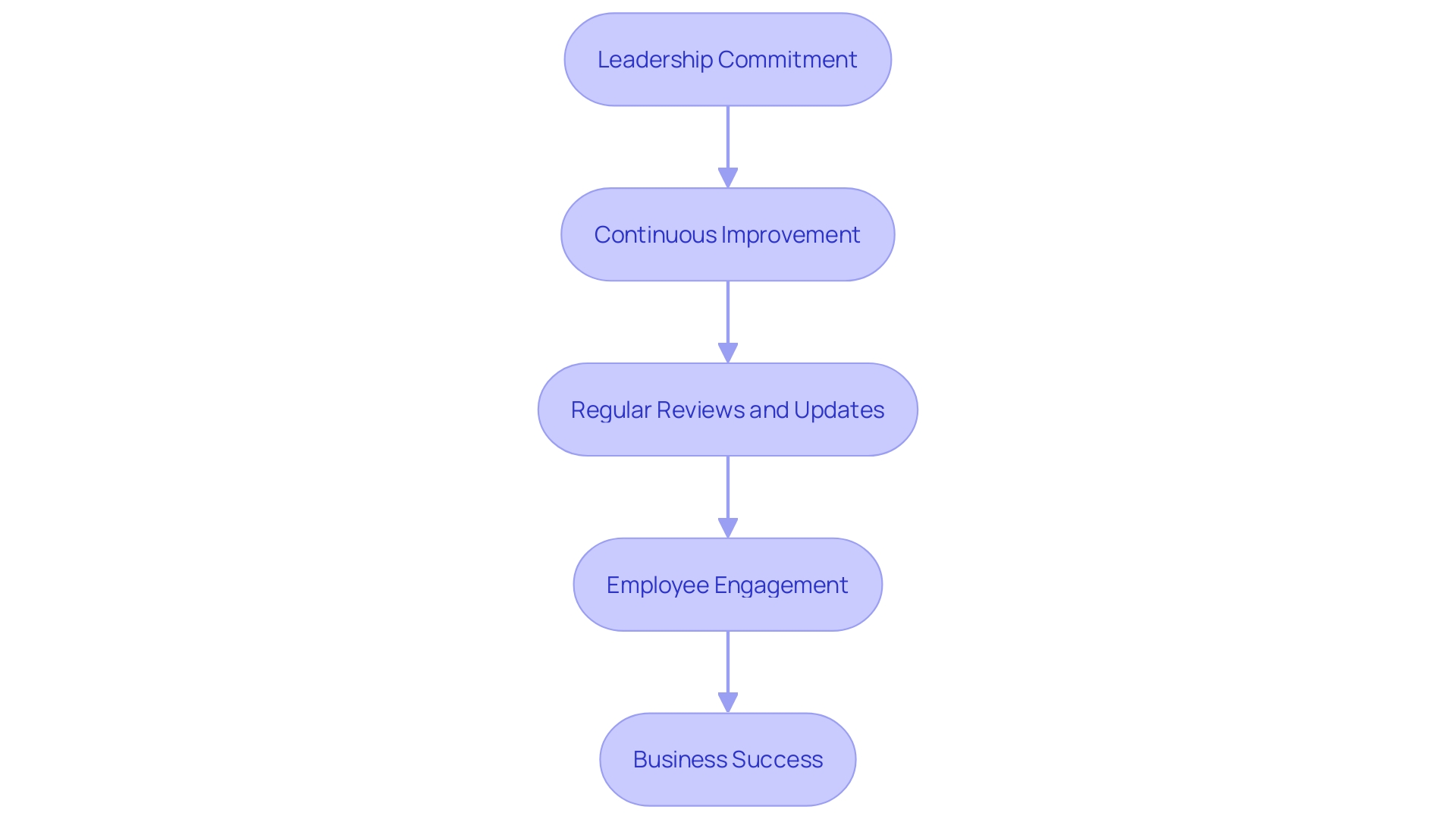
Practical Examples of Critical Success Factors
For retail businesses, inventory management efficiency is paramount. In the second quarter of 2023, successful retailers demonstrated their skill in aligning inventory levels with consumer demand, a feat achieved by some through significant short-term sacrifices. Likewise, customer retention rates and online sales growth have emerged as critical indicators of retail health.
In the manufacturing sector, production cycle time, quality control measures, and supply chain optimization are the cornerstones of success. Streamlining these processes ensures that products meet high-quality standards and are delivered efficiently, contributing to an optimized supply chain.
For technology companies, investment in research and development is crucial for staying ahead. Time to market for new products is a competitive edge, as is ensuring that customers are satisfied with the product features, an insight echoed by industry leaders across various sectors.
Meanwhile, service industries rely heavily on response times and the quality of their service. Employee training and development programs are also essential in ensuring that the service provided meets customer expectations. One such example is a well-known hotel that leveraged its city center location to attract diners and boost food & beverage sales, ultimately achieving great reviews and a notable increase in sales in the first week alone.
These indicators are not just metrics but are reflective of the underlying strategies that drive business growth and sustainability across diverse industries.

Conclusion
In conclusion, critical success factors (CSFs) are essential drivers of organizational success. By understanding and leveraging these CSFs, organizations can pave the way for enduring success in any industry. The process begins with a structured approach to identify the key areas crucial for triumph, including environmental, industry-related, peer-related, and temporal factors.
Creating a strategic plan and identifying CSFs require a comprehensive analysis of the internal and external environment. It is crucial to define performance indicators that serve as benchmarks for measuring success in each critical area. Engaging with key stakeholders validates and refines the identified CSFs.
Measuring CSFs is done through the use of Key Performance Indicators (KPIs) aligned with strategic objectives. These KPIs, such as revenue growth rate, customer satisfaction scores, and market share, provide valuable insights into the organization's performance and progress.
Implementing and monitoring CSFs involve clear communication, assigning responsibilities, setting performance targets, and conducting regular reviews. Leadership commitment, continuous improvement, regular updates, and employee engagement are crucial for achieving CSFs.
Practical examples of CSFs in various industries include inventory management efficiency, production cycle time, investment in research and development, and response times. These examples highlight the underlying strategies that drive growth and sustainability in different sectors.
By understanding and leveraging CSFs, organizations can confidently drive success. This action-oriented approach empowers CFOs to identify, implement, and monitor CSFs, ultimately leading to enduring success.




